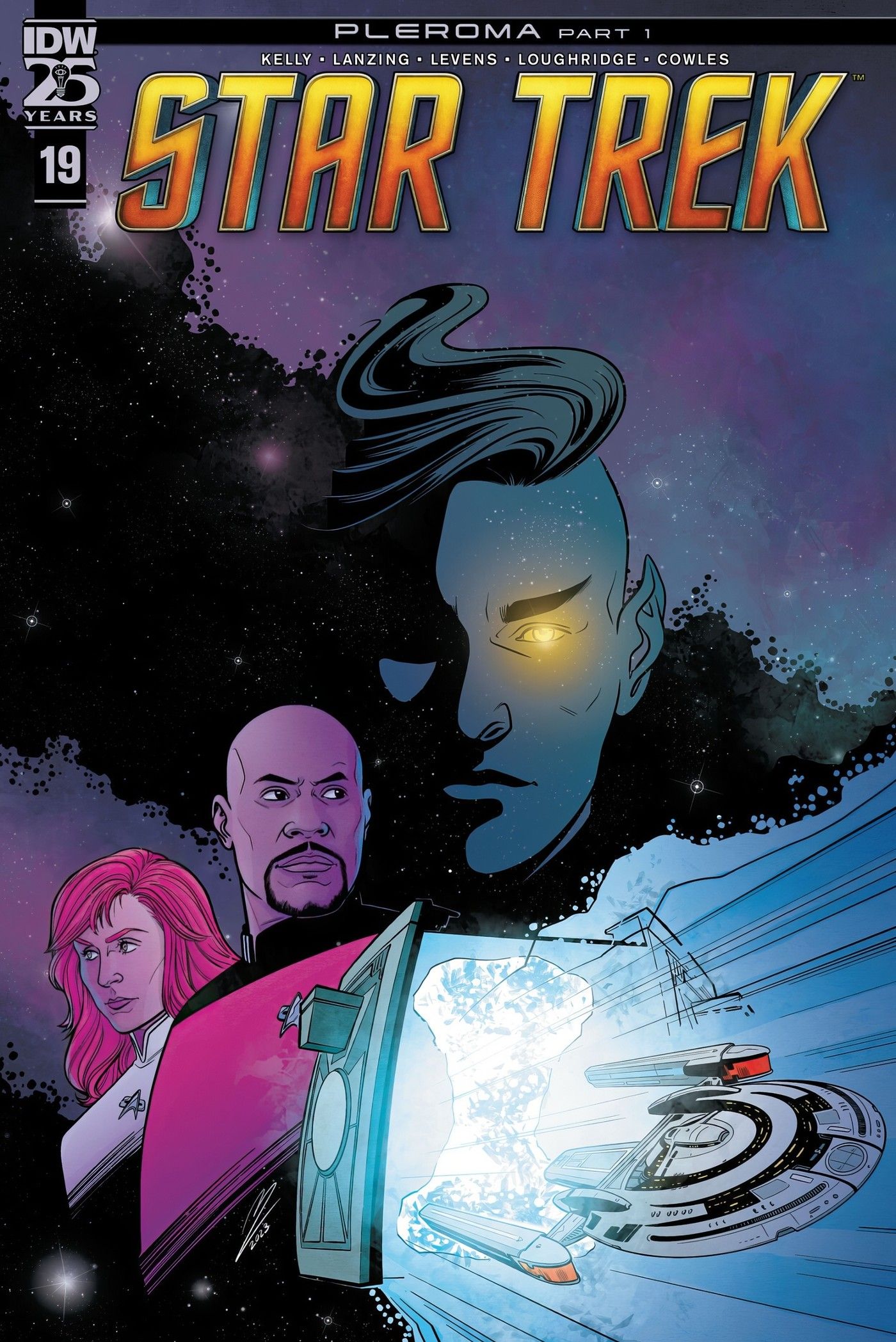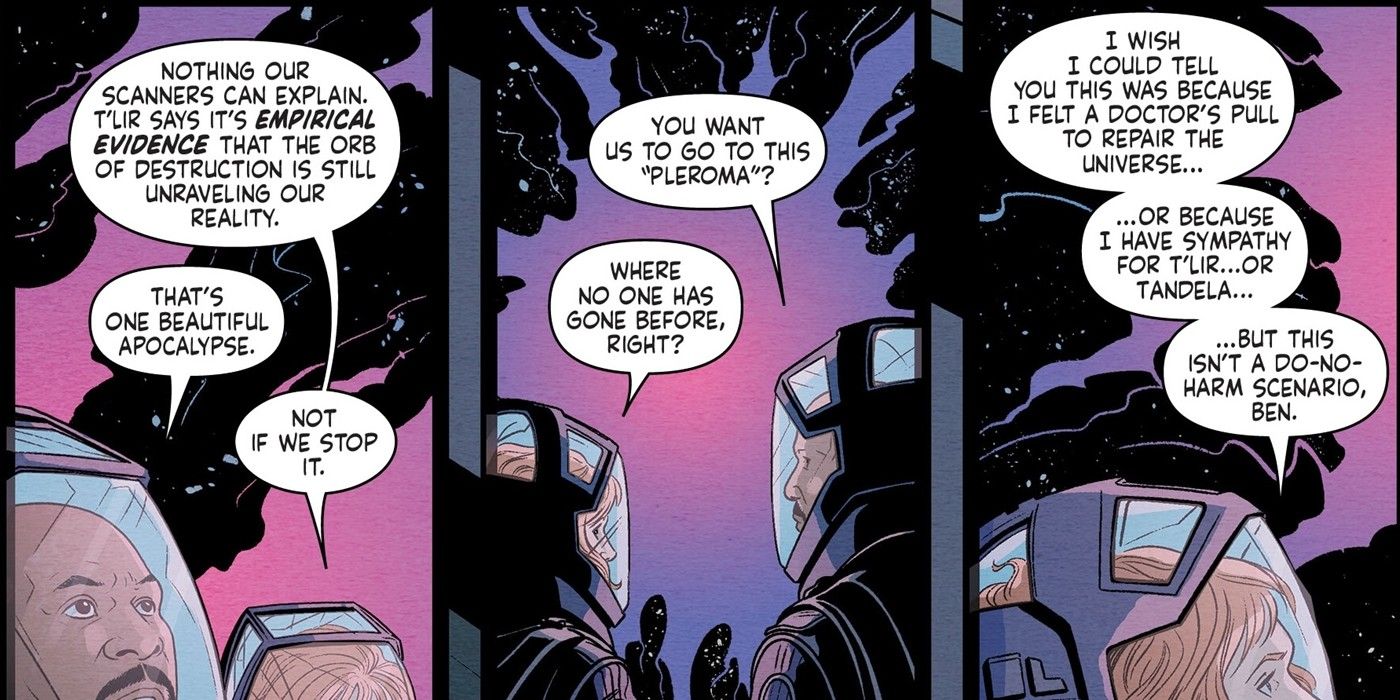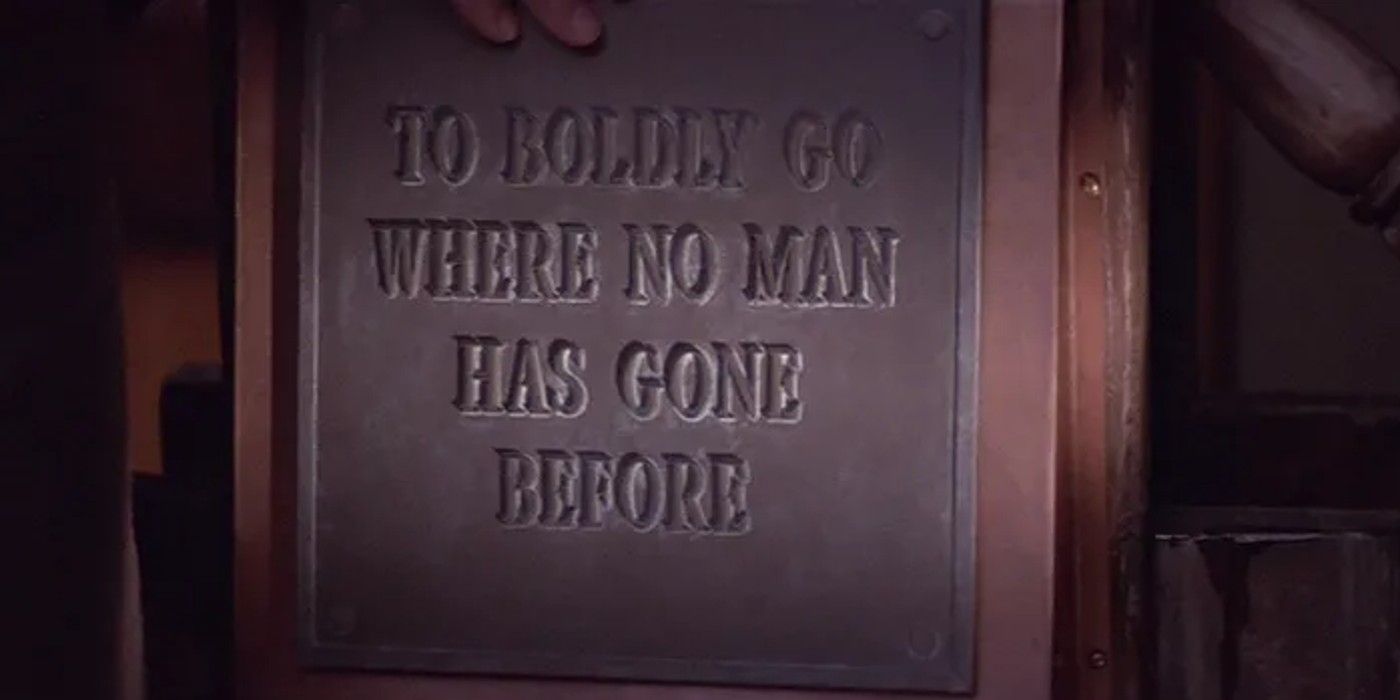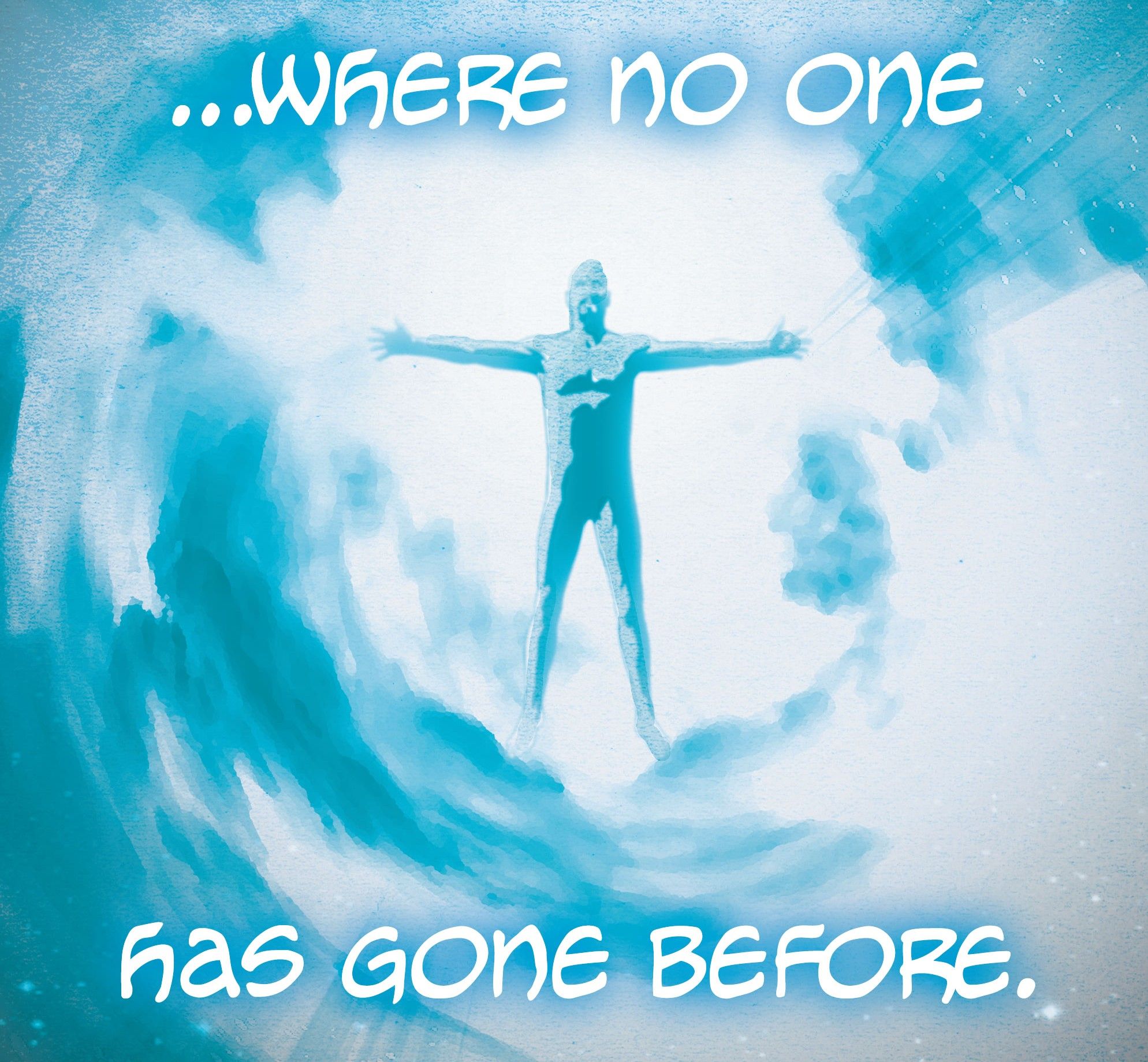Summary
- The iconic catchphrase "where no one has gone before" gets an epic new meaning in Star Trek #19, by Jackson Lanzing, Collin Kelly and Megan Levens.
- Captain Sisko and his crew are heading into the Pleroma, Star Trek's newly revealed "realm of the gods," prompting Doctor Crusher to call it "where no one has gone before."
- One of Star Trek's key tenets is that humanity can evolve and transcend, and the journey to the Pleroma is the first step in this quest.
For generations of Star Trek fans, the catchphrase “where no one has gone before” has been an iconic call to adventure, but now it has taken on a whole new meaning. In Star Trek #19, the crew of the Theseus is heading to the Pleroma, a mysterious new realm that promises great adventure–and great peril. As they prepare for the hazardous journey, the franchise’s catchphrase takes on new layers.
Star Trek #19 is written by Jackson Lanzing and Collin Kelly and drawn by Megan Levens. T’Lir, the enigmatic Vulcan, has been revealed to be the last of the Organians and has charged Sisko and company with a new mission: travel to the Pleroma and help fix the damage Kahless has caused. Sisko is wary of the Pleroma, having been forbidden to travel there by the Prophets.
He discusses the impending journey with Doctor Crusher, and she refers to the Pleroma as “where no one has gone before.”
For Over 60 Years, Star Trek's Opening Monologue Has Perfectly Set the Show's Tone
It Has Undergone Several Changes Over the Years
The catchphrase “where no one has gone before” is one of the most memorable in pop culture. Part of a larger opening monologue, the phrase has undergone a few alterations. When Star Trek premiered in 1966, the line read: “where no man has gone before.” When Star Trek: The Next Generation debuted in 1987, it was updated to the much better and more inclusive “where no one has gone before.” This has since become, with a few exceptions, the standard across the franchise, still recited in both the Abrams Kelvin-timeline movies and Strange New Worlds.
In the pilot episode of Star Trek: Enterprise, it was revealed Zefram Cochrane coined the phrase "where no man has gone before."
Star Trek is a story of exploration and discovery, and this catchphrase perfectly sums up this philosophy. Every week, the crews of the various Star Trek shows encounter bizarre alien life forms and awe-inspiring stellar phenomena. Ships like the Enterprise, Voyager or Discovery expanded the frontiers of knowledge while keeping the galaxy safe. Star Trek’s opening monologs set the tone perfectly for the incredible stories that follow. Now, on the eve of one of the biggest discoveries in galactic history, it is taking on a new meaning.

Star Trek Already Confirmed Its Real Final Frontier (& It's Not Space)
Star Trek often proclaims that it is about humanity's destiny among the final frontier, but what if that doesn't actually refer to space travel?Star Trek Is About More Than Just Exploring Space--It's About Exploring the Human Heart Too
The Pleroma May Hold the Key to Humanity's Evolution
Yet, Star Trek is more than just stories of the exploration of space, but also expanding the potential of humanity. In addition to featuring a future where strife and war have been eliminated, the franchise has shown humanity has great potential, something Q alluded to in the Star Trek: The Next Generation episode “All Good Things.” Humanity will one day be like gods, and the Theseus’ journey to the Pleroma is the first step along the way. The Pleroma opens new possibilities in the Star Trek franchise, giving new meaning to “where no one has gone before.”
Star Trek #19 is on sale now from IDW Publishing!
|
Star Trek #19 (2024) |
|
|---|---|

|
|




